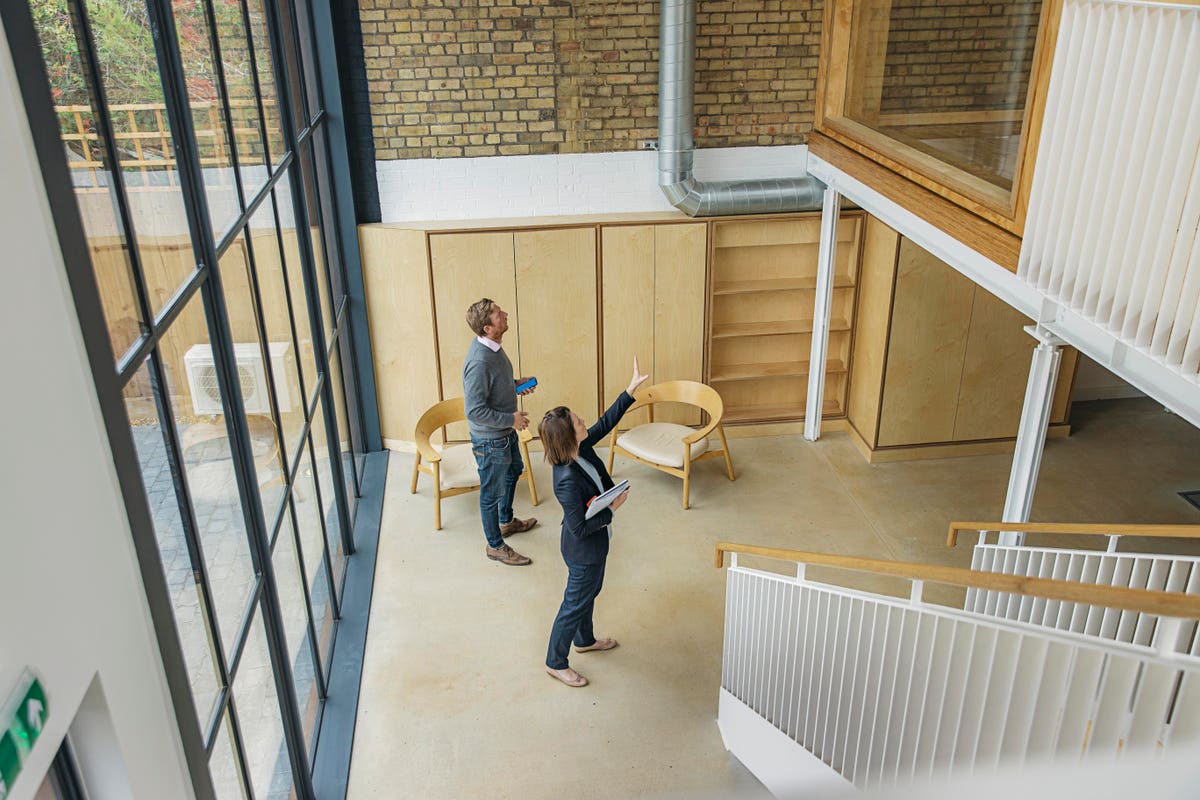Jason Ratcliffe MSc, BA (hons), AssocRICS / Director of Steren Surveyors.
Your staff’s overall satisfaction and health is about more than just running a great business. The environment they work in is a crucial and influential factor in optimizing the performance, mental health and general well-being of your employees. This affects how your company is portrayed and represented, which a business plan does not often account for.
Common Issues To Account For
As an entrepreneur and surveyor, I’ve found that some of the most common issues faced in today’s offices include poor indoor air quality, black spot mold, overheating and hard-to-heat areas, which are often left cold and unpleasant. Many businesses also struggle with poor lighting. Such areas can often have a noticeable impact on the health of employees and on the company’s finances.
First, I recommend addressing the simple things that do not cost the earth but have a big impact, including ensuring your office has plenty of natural airflow as a preventative measure against the build-up of moisture and black spot mold. To improve the environment for employees, you can also increase the amount of natural lighting where possible and bring some nature indoors with a few easy-to-maintain plants.
Ensuring the property is adequately insulated, external main walls are well maintained, that no double or triple glazing has failed and that your heating system is operating optimally by having it regularly serviced can all improve your employees’ well-being and your bottom line. Where possible, you can also try to offset your energy bills with green energy solutions such as solar panels or a heat pump. Grants and funding options may be available if this is outside of your business’s budget. Look for solutions that can help you regulate the heating and ventilation within your commercial property throughout the year, especially if your building is affected by mold, condensation and dampness.
Mechanical airflow systems can aid in forcing airflow through a building, ensuring heat produced by computers and people can be controlled and prevented from building up. UV-protective paneling can be used to reduce solar glare, minimize overheating and increase privacy for your team.
Solar panels can generate both thermal energy and electricity to help offset the building’s carbon footprint and reduce energy costs over time. An initial capital investment can be worthwhile over a longer period of time.
Air and ground source heat pumps can often be installed also to help offset grid reliance on hot water and heating systems.
Additionally, ensuring the insulation within a building is optimized prevents heat escape from occurring. This by itself helps maintain a more stable internal temperature for employees and systems; however, in my experience, it is a strategy that works best with an efficient heating system.
Lifestyle Benefits To Consider
Additional benefits to consider are offering shower facilities and bike racks to allow staff to cycle to work and exercise on their lunch break. You can also install electric recharge points to encourage the use of electric vehicles.
These can be worthwhile investments to increase employee participation and well-being; they can also help your business move the needle on sustainability.
Every building is different; new and more modern offices tend to include a range of sustainable solutions and BREEAM Excellent-rating-quality internal space and facilities. However, older buildings do not have to become something to avoid or become irrelevant. When they’re upgraded, they can provide a sustainable and excellent home for your business to operate within an equally desirable environment as a modern building.
Forbes Business Council is the foremost growth and networking organization for business owners and leaders. Do I qualify?
Read the full article here





